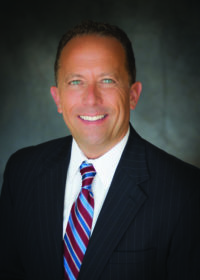
By Jon A. Kaupla, President/Executive Director of the Wisconsin School of Business Center for Professional & Executive Development
Leadership development has long been considered a strategic imperative—but measuring its success remains one of the biggest challenges organizations face. It’s easy to fall back on post-session surveys or anecdotal praise, but when leaders and boards ask, “Did it make a difference?”—we need a more rigorous, meaningful answer.
The truth is, measuring leadership development is less about checking boxes and more about connecting dots: between learning and behavior; between behavior and business outcomes.
Done right, it validates your investment. Done poorly, it becomes hard to justify continued support—no matter how compelling the classroom experience is.
Here’s how to approach it with both clarity and confidence.
Start with Strategy, Not Just Curriculum
Too often, organizations treat leadership programs as standalone experiences rather than strategic tools. But the most effective programs are rooted in solving specific, measurable business challenges. That might mean preparing a bench of ready-now leaders, improving cross-functional collaboration, or driving a culture of innovation.
According to Harvard Business Publishing’s 2024 Global Leadership Development Study, the highest-impact programs were those explicitly tied to business transformation goals—such as growth, digital maturity, or workforce agility.
When learning aligns with strategy, measurement becomes more intuitive. You’re not just asking what people learned, but why it matters.
Stop Measuring Smiles, Start Measuring Change
There’s nothing wrong with collecting feedback on the facilitator or the content—it’s helpful. But measuring leadership development solely by participant satisfaction is like evaluating a fitness program by how much people liked the gym music.
The real question is, did it change anything?
A more comprehensive approach includes tools like pre- and post-program assessments, manager evaluations, and longitudinal 360 feedback.
In fact, LinkedIn’s 2023 Workplace Learning Report noted that organizations using multi-source evaluations saw greater gains in behavioral change and team outcomes.
For example, Human Synergistics’ Leadership/Impact® tool, which CPED proudly partners with, goes beyond basic feedback and measures the link between a leader’s behavior, the culture they shape, and the outcomes they drive. It’s especially powerful in demonstrating how a leader’s approach translates into concrete business results over time.
If your goal is to shift how leaders engage, influence, or make decisions, you need to assess those behaviors over time—not just on the last day of the program.
Behavior Change Takes Time—So Should Measurement
Leadership isn’t developed in a day. Even the most impactful learning experiences take time to show up in daily habits and decision-making. That’s why it’s critical to set measurement checkpoints well after the formal program ends—at three-, six-, or even 12 months.
A recent DDI Global Leadership Forecast found that while nearly 80% of HR leaders believe behavior change is the most important metric to success, only 18% felt confident in their ability to track it.
That gap suggests an opportunity. Organizations that build-in structured follow-ups—whether through coaching, reflection tools, or manager check-ins—can significantly increase long-term program impact.
Look for Ripple Effects Across Teams
While individual growth is important, strong leadership shows up most clearly in the people and teams that leaders influence. Are engagement scores improving under newly developed managers? Is turnover decreasing? Are direct reports more prepared for leadership roles themselves?
Take the example of Hitachi Energy, which implemented a targeted leadership development strategy in 2023. Within a year, salaried turnover decreased by 80%, and hourly turnover dropped 25%—clear indicators that better leadership was creating more stable, supportive work environments (DDI Case Study).
Metrics like team performance, promotion rates, and culture survey results can offer meaningful windows into the broader impact of leadership development—especially when compared to baseline data collected before the program began.
Design for Measurement from the Start
Perhaps the most important step in measuring leadership development success is building it into the program from day one. Don’t tack on a few survey questions at the end—work with your stakeholders to define what success looks like, how it aligns to business goals, and how you’ll track progress over time.
HiBob’s 2024 report on workplace learning found that organizations that integrate evaluation into program design are significantly more likely to report positive ROI—some as high as $4.15 for every $1 invested.
That kind of impact doesn’t happen by accident. It’s the result of intentional design and cross-functional alignment between HR, business leaders, and program facilitators.
A Practical Next Step
Leadership development is a long game—but one worth playing well. If you’re investing in your leaders, you deserve to know whether it’s working. And your leaders deserve support that truly helps them grow.
The most effective organizations don’t just measure whether people learned something—they measure whether they’ve changed something. A mindset. A behavior. A result.
If you’re ready to design a leadership development solution with impact measurement built-in from the beginning, connect with one of CPED’s Solution Advisors. We’ll work alongside you to craft a strategy aligned to your goals—with the tools in place to prove it’s making a difference.

Jon Kaupla is the executive director of the Wisconsin School of Business Center for Professional and Executive Development. He has over 18 years of human resources experience with organizations ranging from non-profits to Fortune 500 companies. Jon has led human resources strategy in the healthcare, financial services, marketing, and retail industries. Jon has a Bachelor of Science in psychology and social work from Florida State University and a Master of Arts in education from Alverno College.